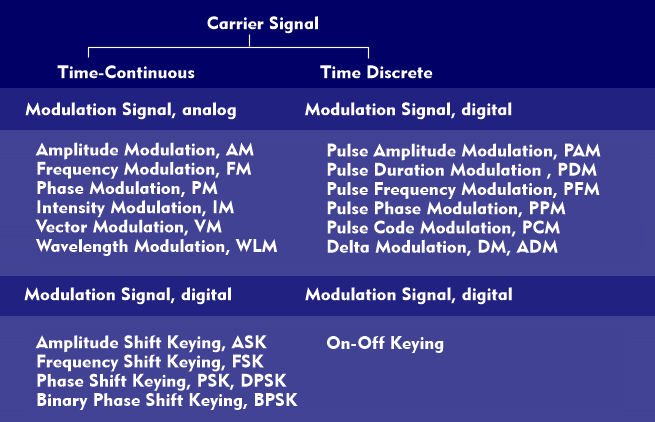modulation
Modulation is the change of signal parameters of a carrier frequency depending on a modulating signal. The carrier signal is a time-dependent signal, for example a carrier oscillation or a pulse train, which is changed in its amplitude or in its time relationship by the application of the modulation signal. In a modulation, the modulation signal and the carrier signal result in a modulation product that is used for transmission.
Depending on the modulation method, a distinction is made between amplitude modulation - in this type of modulation, the amplitude of the carrier oscillation changes with the amplitude and frequency of the modulation signal -, frequency modulation - in which the frequency of the carrier oscillation changes - and phase modulation.
In the latter, the phase position of the carrier oscillation changes depending on the modulation signal. In addition to these basic methods, there are a number of variants such as single sideband modulation, double sideband modulation, double sideband modulation with reduced and suppressed carrier, double sideband reduced carrier( DSBRC) and double sideband suppressed carrier( DSBSC), delta mod ulation or quadrature amplitude modulation.
The various modulation methods have certain disadvantages, which is why further methods have been and are being developed. Amplitude modulation, for example, is very susceptible to interference because the interfering signals overlap the modulation signals. Frequency modulation, on the other hand, is insensitive to interfering signals but has the disadvantage that it requires at least twice the bandwidth. Phase modulation, on the other hand, which remedies this disadvantage, has to contend with distortions and changes in the carrier frequency.

